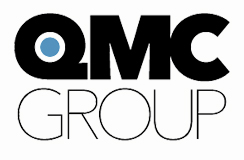If you think an envelope is an envelope, you might want to think again. There are many types of envelopes, and each has different benefits for different purposes. Some open on the short side of the envelope, for example, while others open on the long side. Each type has different lengths of flaps and placement of seams that impact its functionality, such as how the envelopes run through inserters or how graphics can be placed.
How familiar are you with these eight envelope types? Are there some that you hadn’t thought would benefit your next direct mailing?
Straight: Offers a clean design with a straight-edge flap. Because the flap takes up minimal space, this style is preferred for mailings with graphics printed across the back.
Commercial: Offers a bowed or contoured flap with angled shoulders and a scooped throat. This style is designed for optimal performance in high-speed inserters.
Bankers: Sports a longer, bowed, or contoured flap that makes the envelope look more elegant. Bankers’ envelopes are preferred for financial or higher-end applications.
Wallet: Straight flap envelopes have an extra-long, deep flap and wide gummed area that cannot be steamed open easily. This allows them to provide extra security.
Reverse: Designed with the flap at the bottom instead of the top. Reverse envelopes work well for mailers intended to be flipped once the text is read on the front.
Remittance: Designed with a deep, straight flap that extends almost to the bottom of the envelope. Flaps can be printed on the inside and used to provide additional information or serve as forms.
Bangtail: Offers an extra “tail” flap that doubles as a printed form. The flap can be torn off, filled out, and placed back into an envelope to be mailed back.
Baronial or Announcement: This distinctive style is used for social stationery, such as announcements and greeting cards.
Your campaign benefits from the right envelope, just like any other element. Know your envelopes! It matters.
Source: This list is taken from Tension Envelope’s e-book, “Envelope Basics.”

